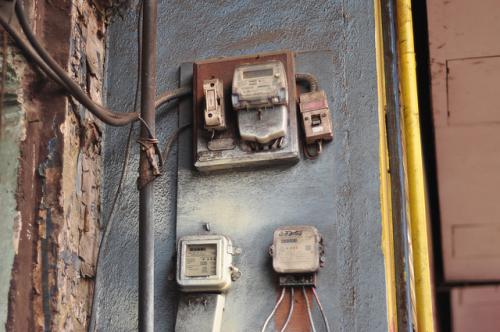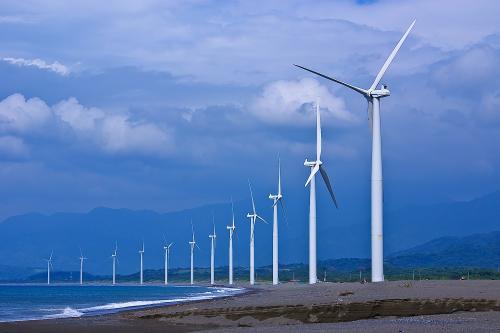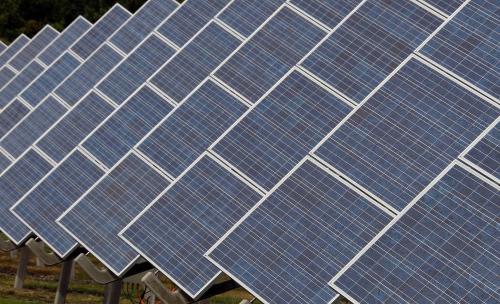Content from the Brookings Institution India Center is now archived. After seven years of an impactful partnership, as of September 11, 2020, Brookings India is now the Centre for Social and Economic Progress, an independent public policy institution based in India.
The government’s recently announced 100 per cent household electrification scheme, Saubhagya, aims to tackle the next link for electrification, where until now most efforts focused at the village or hamlet level. The good news is that most villages are now connected to the grid, and remote locations far from the grid are slated for the creation of distributed (mostly renewable) generation. The bad news is that adding a wire to the home, as the scheme proposes, is only part of the puzzle. What one really needs is quality service (ideally 24×7) for meaningful electrification. This means we have to either strengthen or change the distribution companies (discoms) to ensure we meet this part of the social contract of electricity.
Why aren’t all homes connected?
At the risk of oversimplifying, there were two main reasons utilities (discoms) have not connected every home. First, they didn’t have enough power to meet the demand. For the first time in recent memory, shortfalls are very low to the extent that people talk of a power surplus, though some instantaneous or “peak” shortfalls may remain. Second, they didn’t have the money. Wiring the last set of (mostly rural) consumers is expensive, and these users overwhelmingly have regulator-approved prices (tariffs) well below the true costs to serve.
Saubhagya provides capital support for wiring unconnected homes, a measurable fraction if not majority of costs for serving new users. Today, most regulator-approved charges for wiring a new home rarely cover the upfront infrastructure costs, which then have to be socialised. Costs will vary based on how far the user is from the grid, and, unfortunately, the last to be connected are likely to be the farthest away and most sparsely populated. If one is further than an electric pole’s span, then costs approach Rs 2 lakh per km. Saubhagya averages at only about Rs 4,000/home, inclusive of a meter and limited in-home wiring. While some homes may be clustered, in the absence of data, one can only guess that per home costs may end up far higher than sanctioned.
Equally challenging are usage or energy charges. For a new user consuming, say, 30 kilowatt-hours (kWh) per month (a possible threshold for a “lifeline user”), the full cost of service may be some Rs 150-200/month, but the tariffs set by the regulators are often far lower for the first tier of residential users.
Mandating a meter is welcome and key—consumers are meant to pay notified tariffs, which is important even if the tariff is low and embeds a cross-subsidy by other users. This creates the mindset of paying, and also provides visibility to the utility on consumption. This can also help limit subsidized or free consumption to a lifeline level if so desired.
What else is needed?
The first need is obviously to execute the physical wire to the homes. Hopefully there are enough skilled contractors to handle the enormity of the task—India’s 40 million unconnected homes is roughly triple the next two countries’, Nigeria and Ethiopia. Insufficient capital outlay can be supplemented by state budgetary support or special Central grants, especially for states behind the curve. Thinking holistically, there is money available. Instead of subsidizing (oil company’s under-recovery for) kerosene, the same money could progressively be re-allocated for rural electrification—a greater amount annually than the Saubhagya budget.
Discoms have historically been wary of these last un-electrified consumers not only because they are expensive to wire up but also because they are mostly non-remunerative. Saubhagya addresses the former concern – what about the latter? Today’s low tariffs for new (low consumption) users are loss-making, requiring either subsidies from the government (which can be delayed) or cross-subsidies by other consumers. Why not we update retail tariffs for residential users just to cover the incremental or marginal costs of their power? When Discoms buy power from generators, their contracts usually separate fuel costs from fixed costs, especially for coal power. One more unit of power consumed by a newly electrified home actually just costs the fuel for coal plants, which on average this would only be some Rs 2.3-2.5/kWh, inclusive of technical losses. Fuel costs are lower nearer coal mines (less distances to transport) and so in many of the states with low electrification, the incremental costs of power can be even lower.
Even with such tariffs, higher than today’s, assuming 30 kWh (units) per month lifeline supply, plus adding the typical capacity or fixed monthly consumer charge, this would still be under Rs 100/month household charges — not unreasonable, and an amount many rural users are willing to pay for microgrids, that too for a lower number of units.
If even this is deemed too expensive, states are free to offer any usage (energy) subsidies above and beyond regulator-approved cross-subsidies. If other consumers (excluding agriculture and marginal households) had to cross-subsidise even all the 30 kWh/month for these 40 million homes, the burden would be under 2 per cent. This is with retail tariffs for the Saubhagya homes remaining unchanged from today (and not going up to the marginal fuel costs levels suggested above).
Importantly, will such consumers only use lifeline supply? Discoms are understandably also wary of over-usage, especially at the peak. If we want to ensure that heavily subsidized or free household power is only for lifeline consumption, a meter helps, but captures usage of energy (kWh) only, not capacity or peak demand. A smart meter can do far more, allowing for capped peak usage (say, limited to 300 watts), beyond which the consumer could either choose to be current-limited or pay a “higher” (rather, non-subsidized) tariff. Feeder separation helps improve supply but only at an aggregate level; smart systems can do so with far better granularity.
Under Saubhagya, microgrids are perhaps the biggest theoretical loser, but better coordination can reduce such conflicts. They can be complementary instead of competitive, especially for remote locations. This requires serious discussions on microgrid designs. For example, cheaper DC-based microgrids cannot synergise with an AC grid, due to which investments are viewed as short-term only.
Top-down pushes have been the norm for electrification, worldwide, since we cannot rely on the market to chase such consumers. Saubhagya addresses up-front costs, but we also cannot expect such users to immediately pay the full costs of service. We need new mechanisms and frameworks to also help ensure quality supply. Below-cost models of service provision, even for a public good, risk inefficient consumption, not to mention limit the provider’s ability or appetite to scale and sustain. Getting the wire to the home should only be a matter of time. It’s now time to tackle the other challenges in the ecosystem.










Commentary
Op-edCan the Saubhagya scheme work?
October 31, 2017